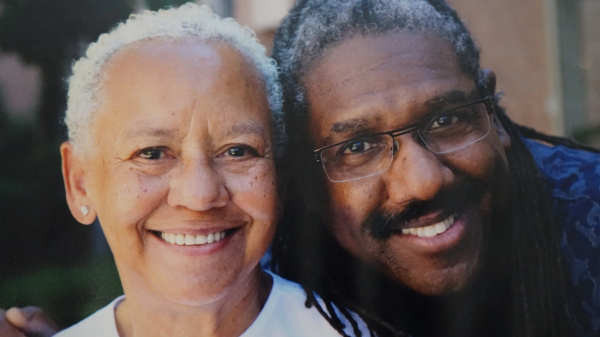History professor wins book award for work on the history of Mexico

Associate Professor A.S. Dillingham. Photo courtesy A.S. Dillingham
The Conference on Latin American History awards the Maria Elena Martinez Prize in Mexican History each year for a book judged to be the most significant work on the history of Mexico published that year.
This year’s award was given to Assistant Professor A.S. Dillingham, who teaches history at Arizona State University's School of Historical, Philosophical and Religious Studies, for his book "Oaxaca Resurgent: Indigeneity, Development, and Inequality in Twentieth-Century Mexico."
This is the second significant prize Dillingham has won for his book. Late last year, he won the Erminie Wheeler-Voegelin Book Award, which is awarded in recognition of the best book-length contribution to ethnohistory.
His book narrates the history of the southern Mexican state of Oaxaca over the course of the 20th century. It pays particular attention to how government policies aimed at alleviating poverty and integrating Oaxaca’s many Indigenous communities were received in the state, and how those policies were often transformed by grassroots actors.
“As a writer, one never knows how your book will be received,” Dillingham said. “It is a long project, and it really is hard to anticipate the reactions to the final project, in this case the published book. The María Elena Martínez Prize is particularly meaningful as it carries the name of a scholar who I had the privilege to meet before she passed. Dr. Martínez was a brilliant historian and a kind human being.”
The book was a long time in the making. Dillingham’s interest in Indigenous people’s involvement with the Mexican government began during his first year of graduate school in 2006 while enrolled in a seminar on Mexican history. The seminar was held in Oaxaca City and happened to coincide with an annual teachers’ strike.
“The strike involved public school teachers from across the state and since the 1980s had become a kind of ritualized affair, in which teachers would strike on May 1, International Workers’ Day, for better pay and classroom support and then enter negotiations with the government and ultimately reach a settlement,” Dillingham said.
But that summer, the strike did not go as planned. Instead of negotiating, the governor chose to send riot police to the striking teachers’ encampment, where they were tear gassed and injured. This sparked an even bigger strike and a subsequent social movement that ended with the teachers demanding everything from the governor’s resignation to the re-writing of the state constitution.
“I wanted to understand that social movement and so I turned to history to answer my questions,” Dillingham sai. “Oaxacan activists and intellectuals counseled me to follow the history of Indigenous education and development in the state, as Indigenous bilingual teachers were at the head of that movement. I began to examine how the government had contracted Indigenous people to be teachers, health workers or other agents of development.”
He continued to research these movements and specifically started the research that would turn into "Oaxaca Resurgence" during his doctoral dissertation ten years ago.
“My goal was for the book to be as accessible as possible and to reflect the beauty of Oaxaca, which had so inspired me, so I spent a good deal of time rewriting and expanding the book,” Dillingham said.
Dillingham hopes his book accomplishes two things. One, that it contextualizes the Indigenous history in Oaxaca within the view of the whole western hemisphere in order to discuss related patterns across nations. And two, that it brings Indigenous youth into the student and youth-led movements of the 1960s, since they are often overlooked when discussing the social change of that era.
“On the most fundamental level, I hope people see that Indigenous peoples have never been mere passive victims of the Mexican state,” Dillingham said. “Just like Native peoples across the hemisphere, Oaxacans resisted, negotiated and transformed government policy aimed at their subordinated incorporation into the state. If we understand that about the past, it should inform our understanding of Indigenous politics today.”
With this book completed, but his passion for the topic still burning, Dillingham plans to answer the questions "Oaxaca Resurgent" left him with.
“In my research for 'Oaxaca Resurgent,' I came across a government program that sought to resettle highland Mixtec communities to the Pacific coast of Oaxaca,” Dillingham said. “In the mid-20th century, governments throughout the hemisphere — including the U.S. government — promoted programs of Indigenous resettlement with the idea that this would improve Native peoples’ conditions.
“But in this case, the Mexican government resettled Mixtec families on land that belonged to Afro-Mexican communities. This state-sponsored project ultimately sparked a violent conflict between Black and Indigenous communities, and I’d like to research that history in the future in order to think more about that relationship.”
More Arts, humanities and education

School of Social Transformation faculty member assumes new title with NSF
School of Social Transformation faculty member and Founding Executive Director of the Center for Gender Equity in Science…

ASU's Neal Lester reflects on life, death of poet Nikki Giovanni
When Neal Lester heard on Monday that poet and activist Nikki Giovanni had died, the news hit hard.Lester, the founding director…

Learning by stepping outside
By Adriana MaestasAmid a world increasingly captivated by all things digital, more than 200 Arizona teachers have crafted…